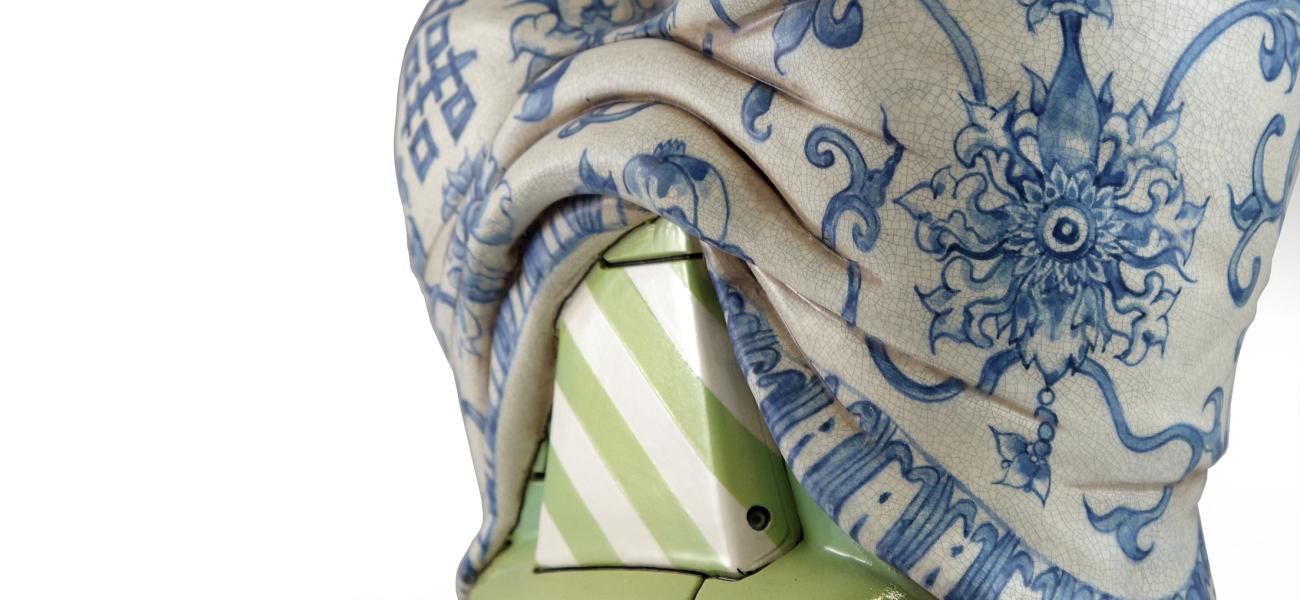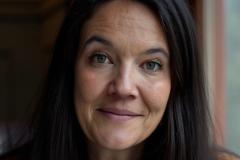Deep Time and Speculative Futures
 Brendan Lee Satish Tang’s ceramic practice is a vast open-world campaign, layered with quests, hidden lore, and dynamic shifts that mirror the complexity of his story. Speaking from Vancouver, Canada, on the unceded territories of the Musqueam, Coast Salish, and Tsleil-Waututh peoples, Brendan reflects on a career that combo-chains[1] together tradition, hybridity, humor, and speculative imagination. A tenured professor at Emily Carr University, he moves fluidly between teaching ceramics, mentoring interdisciplinary graduate students, and sustaining his own rigorous studio practice – dare I highlight his other side quests of gaming, both board and console games, vintage toy connoisseurship, podcast host for The Kiln Sitters, and being a husband, not to mention serving as a host for The Great Canadian Pottery Throw Down. From exploring the visual language of gaming and cosmic horror to reimagining cultural belonging through clay, Brendan invites audiences into a world where ceramics, identity, and storytelling intersect.
Brendan Lee Satish Tang’s ceramic practice is a vast open-world campaign, layered with quests, hidden lore, and dynamic shifts that mirror the complexity of his story. Speaking from Vancouver, Canada, on the unceded territories of the Musqueam, Coast Salish, and Tsleil-Waututh peoples, Brendan reflects on a career that combo-chains[1] together tradition, hybridity, humor, and speculative imagination. A tenured professor at Emily Carr University, he moves fluidly between teaching ceramics, mentoring interdisciplinary graduate students, and sustaining his own rigorous studio practice – dare I highlight his other side quests of gaming, both board and console games, vintage toy connoisseurship, podcast host for The Kiln Sitters, and being a husband, not to mention serving as a host for The Great Canadian Pottery Throw Down. From exploring the visual language of gaming and cosmic horror to reimagining cultural belonging through clay, Brendan invites audiences into a world where ceramics, identity, and storytelling intersect.
Brendan: “Over the last six, maybe seven years, my interest has been growing towards something that's probably a little deeper and darker. My recent fascination with horror and cosmic horror has been one of the driving forces behind those interests. And I don't know if it's because we live in uncertain times – which is the most politically correct way to put it – but horror provides something that is, on the one hand, my subconscious preparing for the monsters. And on the other hand, a way to look at how others have prepared for monsters.
“I feel like one could easily look at the zeitgeist phobias [vampires, zombies, aliens] and see that they represent xenophobic fear – a symbol for being unsure about others – or the general apathy that could be embodied by a horde of zombies, or the feeling of late-stage capitalism and vampirism. I think there are some really wonderful things there, but I feel like I'm digging deep into, specifically, Lovecraftian horror and horror that is based on things that can't be understood.
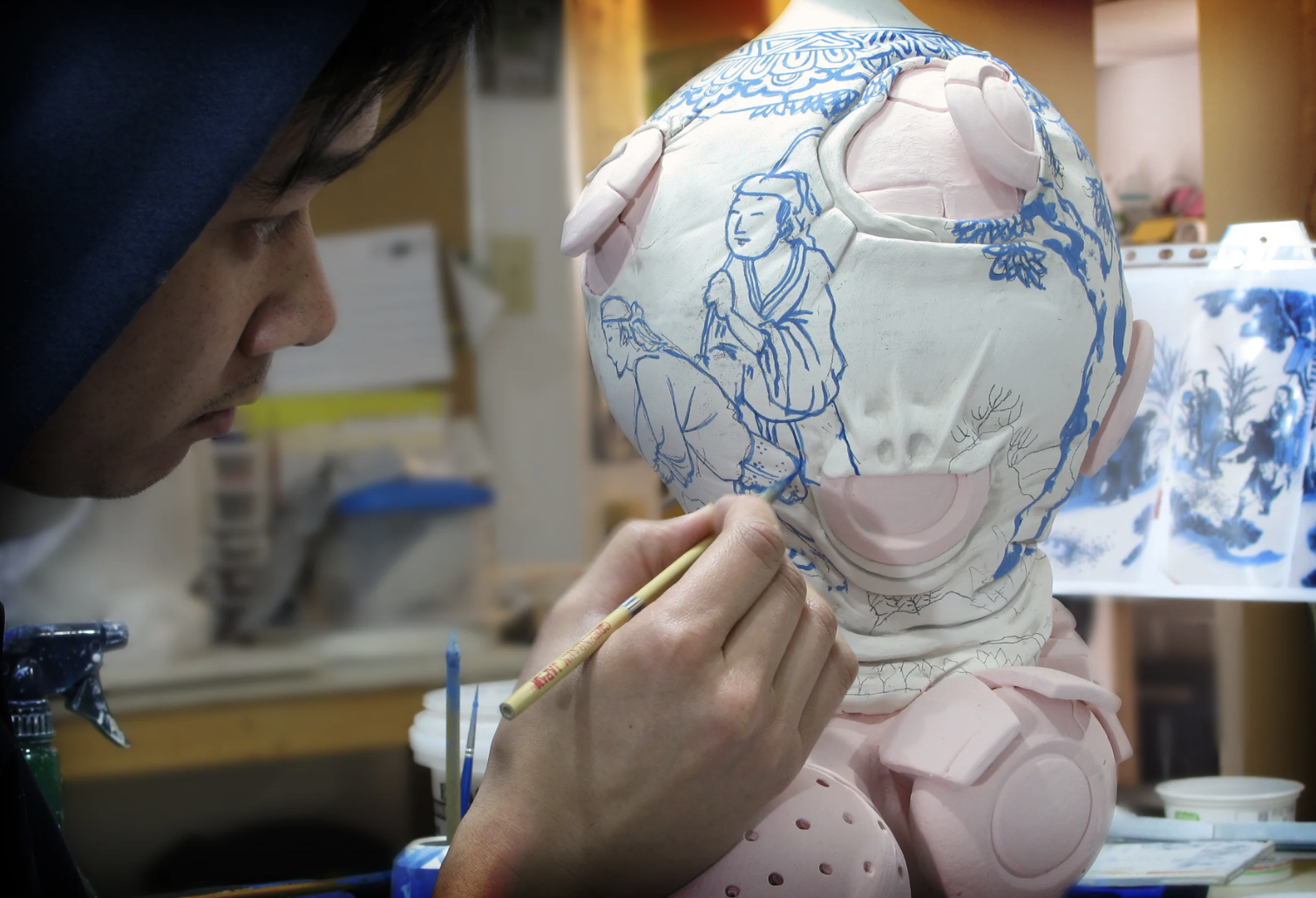 "Things that date way back before mankind, where there is that sort of bigness [in time, and space, and material], that is stirring me.
"Things that date way back before mankind, where there is that sort of bigness [in time, and space, and material], that is stirring me.
“There is something analogous to our situation with the climate, where it is so huge that in Lovecraftian Horror, the people who have faced the quote, unquote ‘evil,’ lose their minds, while the general public goes about their business. Parallel to this, I feel like a small percentage of people deeply realize we are in an environmental collapse, but the other larger percentage is on autopilot. It's really terrifying. Then there are people deciding what we should be talking about, be it whatever social media thing is happening or a CEO who is cheating on his wife, right? That is what is being put in front of our faces, not the vastness of the true horrors of our time.”
Brendan’s meditation on horror and cosmic horror frames fear as a cultural mirror. Horror, in this sense, acts as a warning and a coping mechanism, a way to grapple with what feels too vast or incomprehensible, whether that’s the climate crisis or the instability of our current moment. Brendan leans into darkness as a means of provoking reflection. This balance, between depth and play, terror and curiosity, echoes in his visual language. In much of his work, humor, irony, and playful exaggeration serve as the avatar for serious critique. Just as horror uses monsters to hold up a mirror to society’s fears, Brendan’s ceramics use bright color and sly visual twists to lure the viewer in to reveal the cultural commentaries underneath.
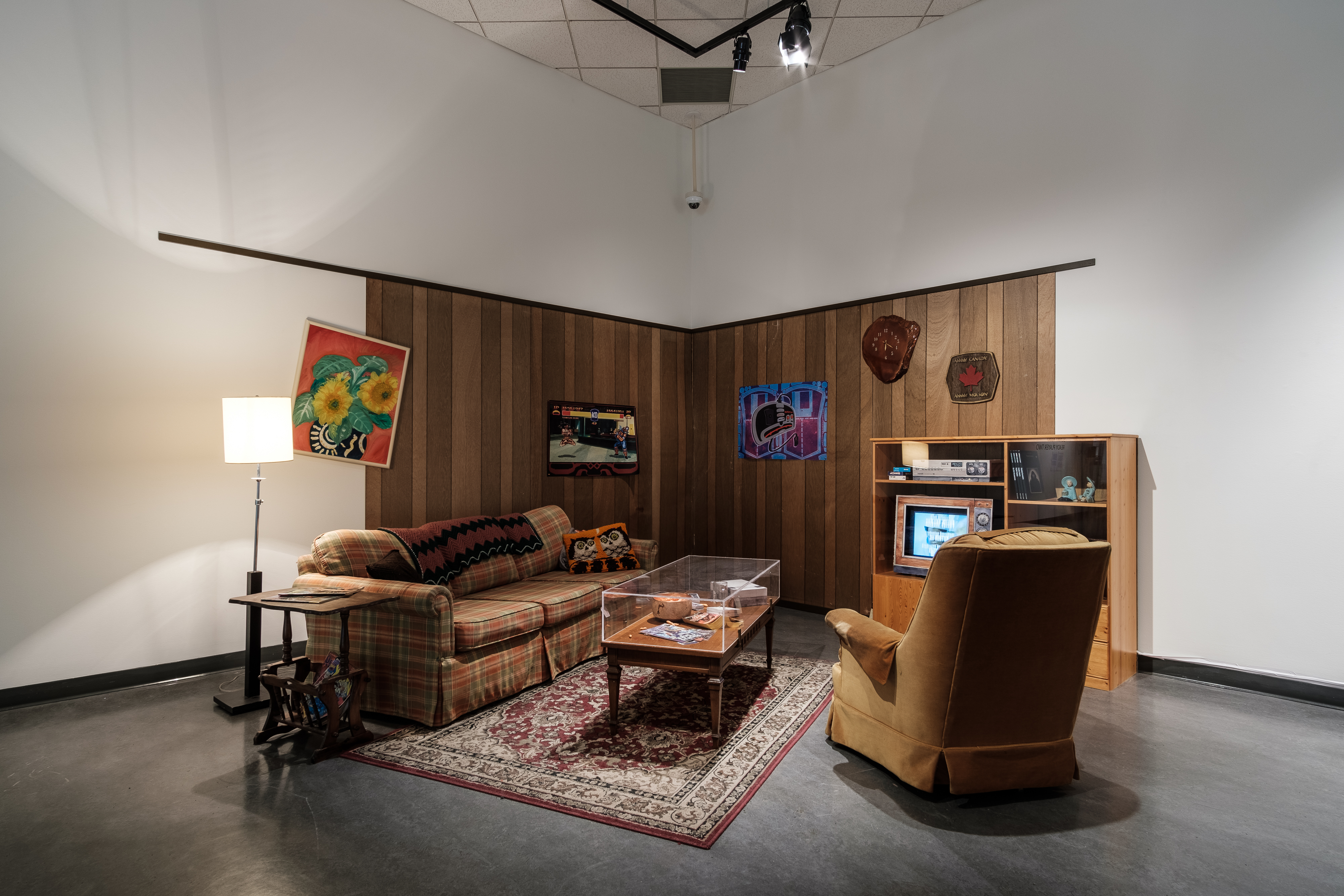 Brendan: “I and Sonny Assu – he's part of the Kwakwaka'wakw First Nations on Vancouver Island – collaborated on a show called Ready Player Two. We are the same age and children of the 80s, and we both have this interesting, shared experience of a very nerdy childhood – video games, comics, etc. In this show, we both explored our childhoods and investigated where our visual language originated and how it was informed by popular culture.
Brendan: “I and Sonny Assu – he's part of the Kwakwaka'wakw First Nations on Vancouver Island – collaborated on a show called Ready Player Two. We are the same age and children of the 80s, and we both have this interesting, shared experience of a very nerdy childhood – video games, comics, etc. In this show, we both explored our childhoods and investigated where our visual language originated and how it was informed by popular culture.
“You can see that direct relationship to my Manga Ormolu series, where it is a hybrid of Ming Dynasty vases and these robotic elements that you would have seen in Transformers or Robotech.
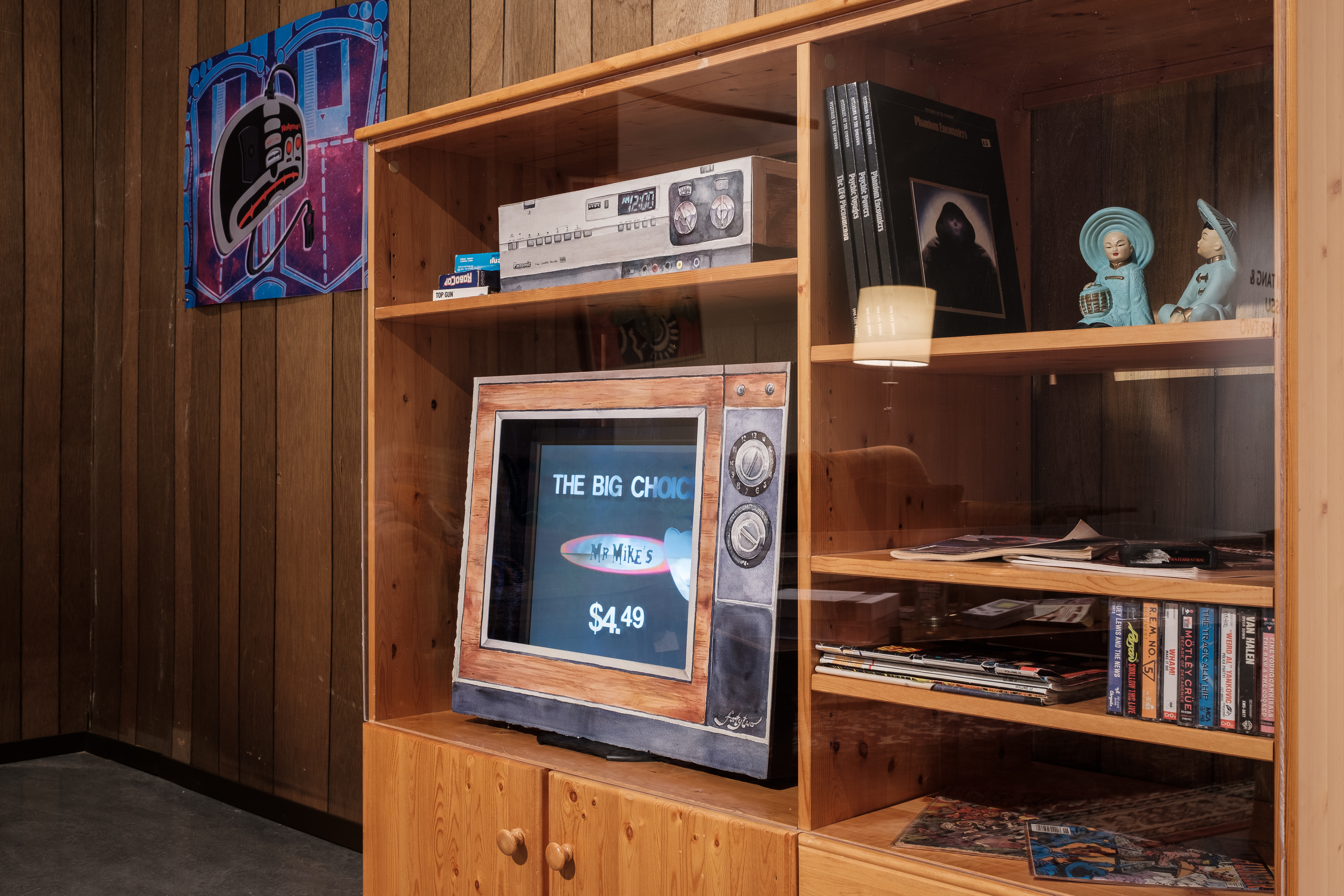 “But, for us in the Ready Player Two series, I think there was something that was interesting about the notions around Dungeons and Dragons as a young child. How one learns these ideas that are common parlance in various video games, like the idea of the ‘grind’ and the grind leading to leveling up and getting better. One needs to put in time and gain experience points, which is, you know, a learning currency within role-playing. Oddly enough, I feel like that is so much of the craft ethos. It’s that grinding and that sense of time that you put into it – the Malcolm Gladwell 10,000-hour concept. I think it speaks to a lot of potters and craft-based practices. It also speaks to people who play Dungeons and Dragons or any of these role-playing games that have some sort of experience mechanism where characters level up and get better, and they become more heroic as the game progresses.
“But, for us in the Ready Player Two series, I think there was something that was interesting about the notions around Dungeons and Dragons as a young child. How one learns these ideas that are common parlance in various video games, like the idea of the ‘grind’ and the grind leading to leveling up and getting better. One needs to put in time and gain experience points, which is, you know, a learning currency within role-playing. Oddly enough, I feel like that is so much of the craft ethos. It’s that grinding and that sense of time that you put into it – the Malcolm Gladwell 10,000-hour concept. I think it speaks to a lot of potters and craft-based practices. It also speaks to people who play Dungeons and Dragons or any of these role-playing games that have some sort of experience mechanism where characters level up and get better, and they become more heroic as the game progresses.
“Anyone who has played Legend of Zelda or even Pokémon – the millennials and those gaming folks – will definitely get those analogies.
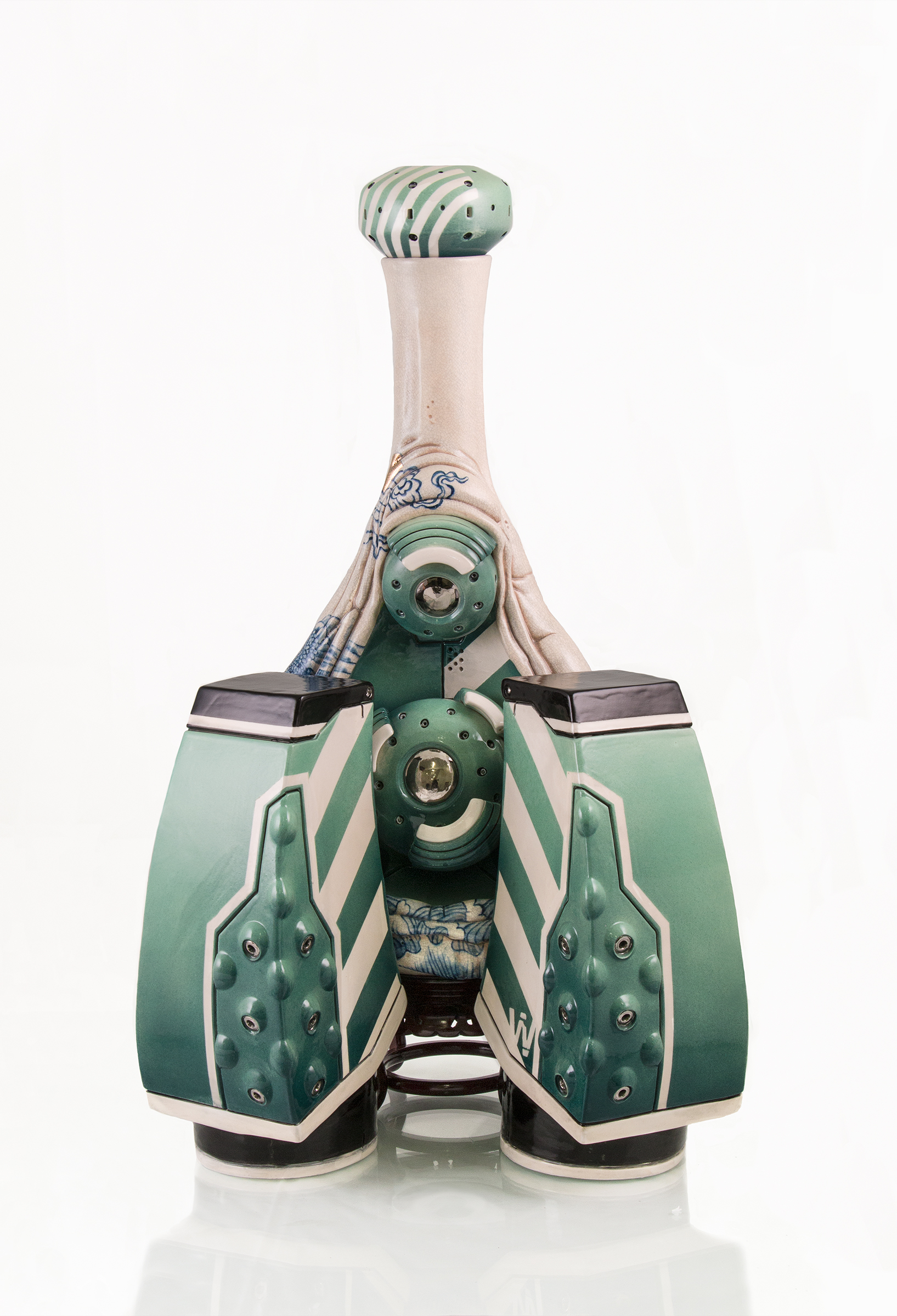 “There is a visual language that relates to the grind, to the detective/exploration work, to the idea, or to the mechanism of crafting in video games – harvesting things and then crafting objects out of them – and it's this usage of or appropriation of our childhood language that we use in our adult mediums of choice.”
“There is a visual language that relates to the grind, to the detective/exploration work, to the idea, or to the mechanism of crafting in video games – harvesting things and then crafting objects out of them – and it's this usage of or appropriation of our childhood language that we use in our adult mediums of choice.”
Brendan’s work resides in the realm of speculative play. His creative process draws on the imaginative frameworks of gaming, comics, and science fiction, not as literal subject matter, but as a way of structuring thought. Speculative play, for Brendan, is a cultural lens. Growing up in the 1980s immersed in Dungeons & Dragons, comics, and Transformers, he absorbed the language of “leveling up,” “the grind,” and narrative world-building. These concepts, while rooted in childhood play, resurface in his studio practice as metaphors for craft itself. The repetition, labor, and incremental mastery of ceramics echo the mechanics of role-playing games.
But speculative play is not mere nostalgia; it becomes a mode of critique. By staging ceramic works that borrow from sci-fi aesthetics, Brendan invites viewers into a playful space of recognition. Once there, they encounter layered questions about identity, cultural belonging, and the pressures of assimilation. The playfulness lowers defenses, while the speculative element destabilizes certainty, opening a space where irony and critique can unfold side by side.
I ask Brendan about the humor and irony in his work, and he reflects.
Brendan: “I think this is just part and parcel of how I, Brendan, the human, go about my life. I use humor a lot, and I think it was a skill that I learned early on as a brown kid in a predominantly white community. Humor is a great way to diffuse any tension or fear or whatever may exist in those spaces. I think there are a lot of people of color who use humor as a vehicle to negotiate and navigate through their lives. So, it made sense for me to infuse that in my own artistic work, because I know the success of it.
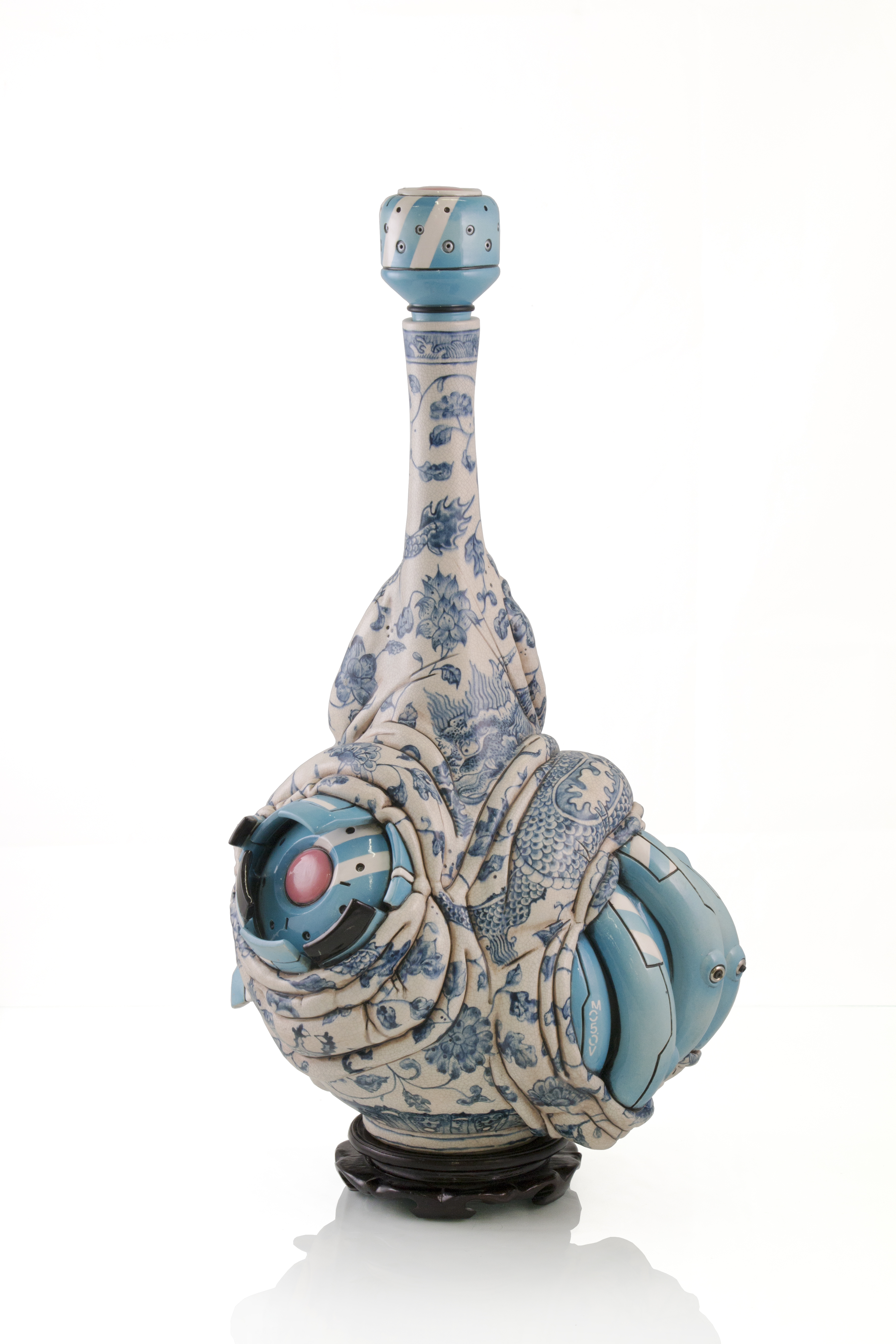 “Using humor is like that spoonful of sugar to help the medicine go down. I also use humor as a lure as well. For example, my Manga Ormolu work hooks those folks who ask the question, ‘How is this made?’ It becomes this cerebral puzzle. If I can do that with humor, where people are equal parts laughing and curious, they're opening themselves up to those playful critiques and visual ironies. Their defenses are a little bit down; it's like bridge building.
“Using humor is like that spoonful of sugar to help the medicine go down. I also use humor as a lure as well. For example, my Manga Ormolu work hooks those folks who ask the question, ‘How is this made?’ It becomes this cerebral puzzle. If I can do that with humor, where people are equal parts laughing and curious, they're opening themselves up to those playful critiques and visual ironies. Their defenses are a little bit down; it's like bridge building.
“I am also 100% aware of the dangers of those kinds of devices, like humor, or virtuosity, or even using craft-based practices, but I think there's a humility behind ceramics that people can approach the work more easily because they're more familiar with the materiality through all the ceramics they have in their household, from their toilets to their coffee cups and so on.”
Beneath the surface of humor lies another essential lens: identity. The same impulse that leads him to sugarcoat difficult truths with playful technical challenges also shapes how he situates himself within layered histories of migration, hybridity, and belonging. His Irish, Chinese, South Asian, and Trinidadian heritage threads through the work just as surely as his technical skill or playful tone. In Brendan’s view, he is holding space for the more complicated reckonings that underlie his practice.
Brendan: “My heritage is probably a lens that I either consciously or subconsciously look through in all of my work. And I think viewers can also engage in their own process of unpacking as they encounter my work.
“I was the first of my three brothers that was born in Dublin, Ireland. My parents immigrated to Dublin in 1969. My father went there to go to medical school at the Royal College of Surgeons in Dublin. My father is Chinese, and my mother is South Asian, and my mom is a third- or fourth-generation Trinidadian in the Caribbean. My dad is a first-generation Trinidadian. His parents left China, we think, during the time when Mao was coming down from the north. We moved to Canada when I was five, and so I am also a naturalized Canadian citizen."
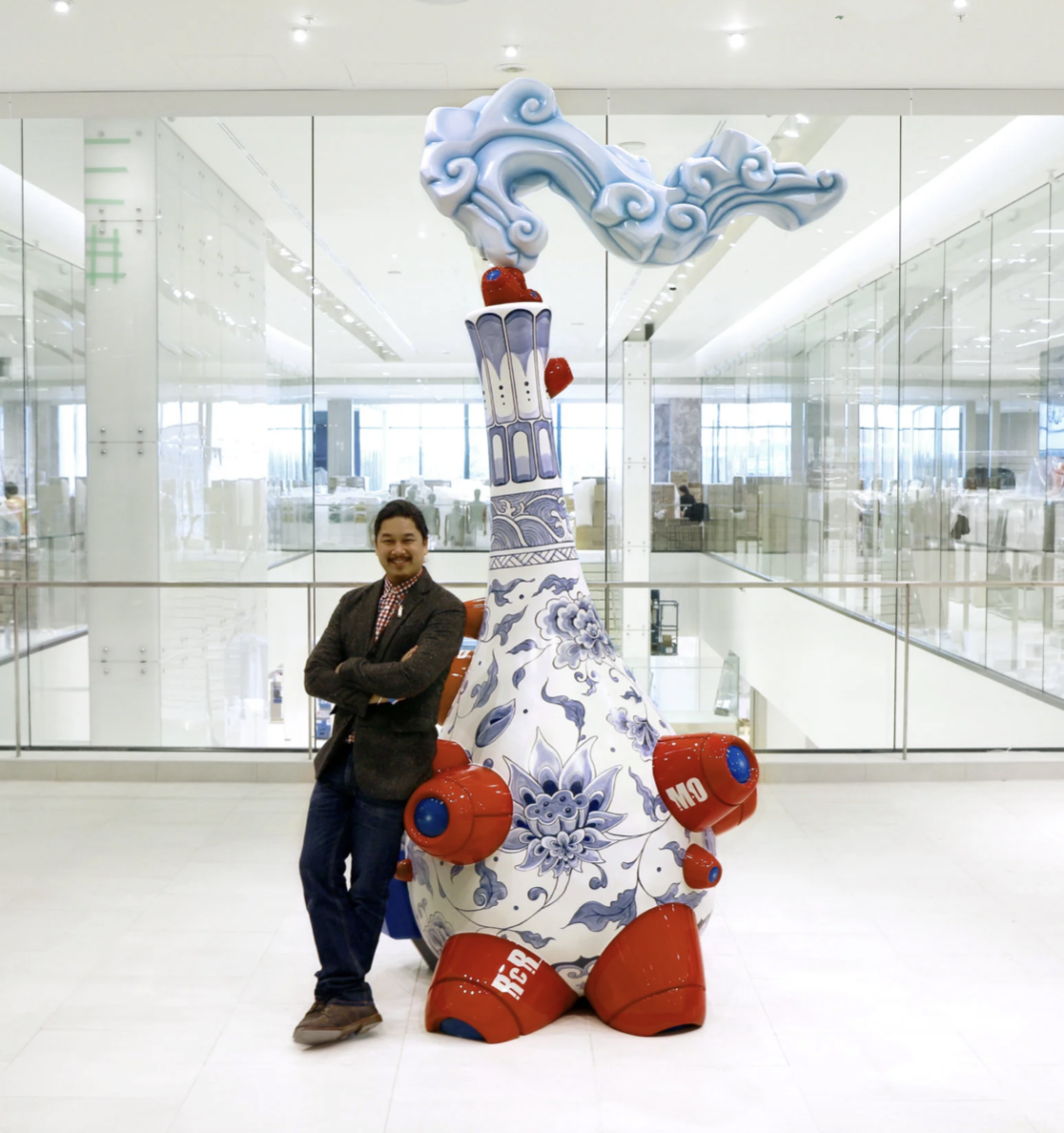 Brendan’s practice thrives in the logic of remix culture, borrowing, splicing, and reconfiguring influences into forms that challenge race and belonging. Brendan's practice can be understood through the theoretical lens of postmodern bricolage. “Bricolage,” a term coined by a French theorist, Claude Lévi-Strauss, in his book The Savage Mind (La Pensée Sauvage), describes one who improvises by assembling meaning from whatever resources are available. The popularity of the phrase “postmodern bricolage” grew later out of postmodernist theory in the 1970s and 1980s. Cultural theorists and literary critics like Jean Baudrillard and Jacques Derrida extended Lévi-Strauss’s idea, applying bricolage to postmodern art, literature, and culture, where mixing styles, sampling, and reassembling fragments became defining strategies.
Brendan’s practice thrives in the logic of remix culture, borrowing, splicing, and reconfiguring influences into forms that challenge race and belonging. Brendan's practice can be understood through the theoretical lens of postmodern bricolage. “Bricolage,” a term coined by a French theorist, Claude Lévi-Strauss, in his book The Savage Mind (La Pensée Sauvage), describes one who improvises by assembling meaning from whatever resources are available. The popularity of the phrase “postmodern bricolage” grew later out of postmodernist theory in the 1970s and 1980s. Cultural theorists and literary critics like Jean Baudrillard and Jacques Derrida extended Lévi-Strauss’s idea, applying bricolage to postmodern art, literature, and culture, where mixing styles, sampling, and reassembling fragments became defining strategies.
At the heart of this theory is the process of gathering and reassembling cultural fragments into new hybrid forms that refuse singular origins. In Brendan’s own words, he is a “channel-surfer of visual culture,” where he withdraws imagery from banks of disparate realms – Ming dynasty porcelain, French Rococo ornament, Japanese manga, plastic toys, and contemporary pop culture.
His aesthetic may appear hybrid in its consumption of references, yet it is anchored by an unfailing dedication to craftsmanship.
Brendan: “A lot of the work that I do is in an effort to unpack myself, to find belonging.
“When we look at the Manga Ormolu work, ormolu is an 18th-century European practice where they brought Chinese ceramics into their spaces, and to make it more relevant to their own culture, they would put this gold filigree all over the objects. A Rococo mindset. With this cultural hybridity in mind, I started to look at Chinese ceramics – but through a Western lens because of my upbringing – and apply something that is relevant to my own identity, which is growing up with speculative fiction and science fiction, and applying that visual vocabulary to the objects.
“As a child, I remember being interested in Transformers because they were robots in disguise. And it's just like me as a Chinese, South Asian kid growing up in a predominantly white culture. Me thriving and striving to be as white as possible. It was a feeling of being a robot in disguise, you know; I think there's lots to kind of unpack there.”
From my own first-hand experience, cultural detachment emerges as both shield and wound. For those of us from mixed-race backgrounds, identity is not merely inherited but negotiated within structures of power; to belong, one learns to silence certain aspects of self. This is the logic of assimilation, “do not rock the boat,” as Brendan reflects in our conversation, is a strategy passed down as generational trauma, where survival required quiet compliance in the face of dominant norms. For Gen Xers and earlier generations, this silencing created a paradox: advancement came at the cost of voice, heritage, and continuity. The ache of this detachment is compounded when witnessed against younger generations who are actively reclaiming and celebrating their identities openly. Brendan situates Reluctant Offerings in this gap between enforced silence and joyous reclamation. In this body of work, the act of burning paper objects becomes less a perfected ritual than a vulnerable, provisional attempt to reconnect with severed cultural lineages. In doing so, Brendan transforms the inherited injunction to assimilate into a poetic meditation on the difficulty and necessity of reclaiming cultural voice.
Brendan: “There is this Chinese Buddhist practice called the joss paper tradition, where they make paper objects – paper blessings – to burn, which then go to your ancestors in the afterlife.
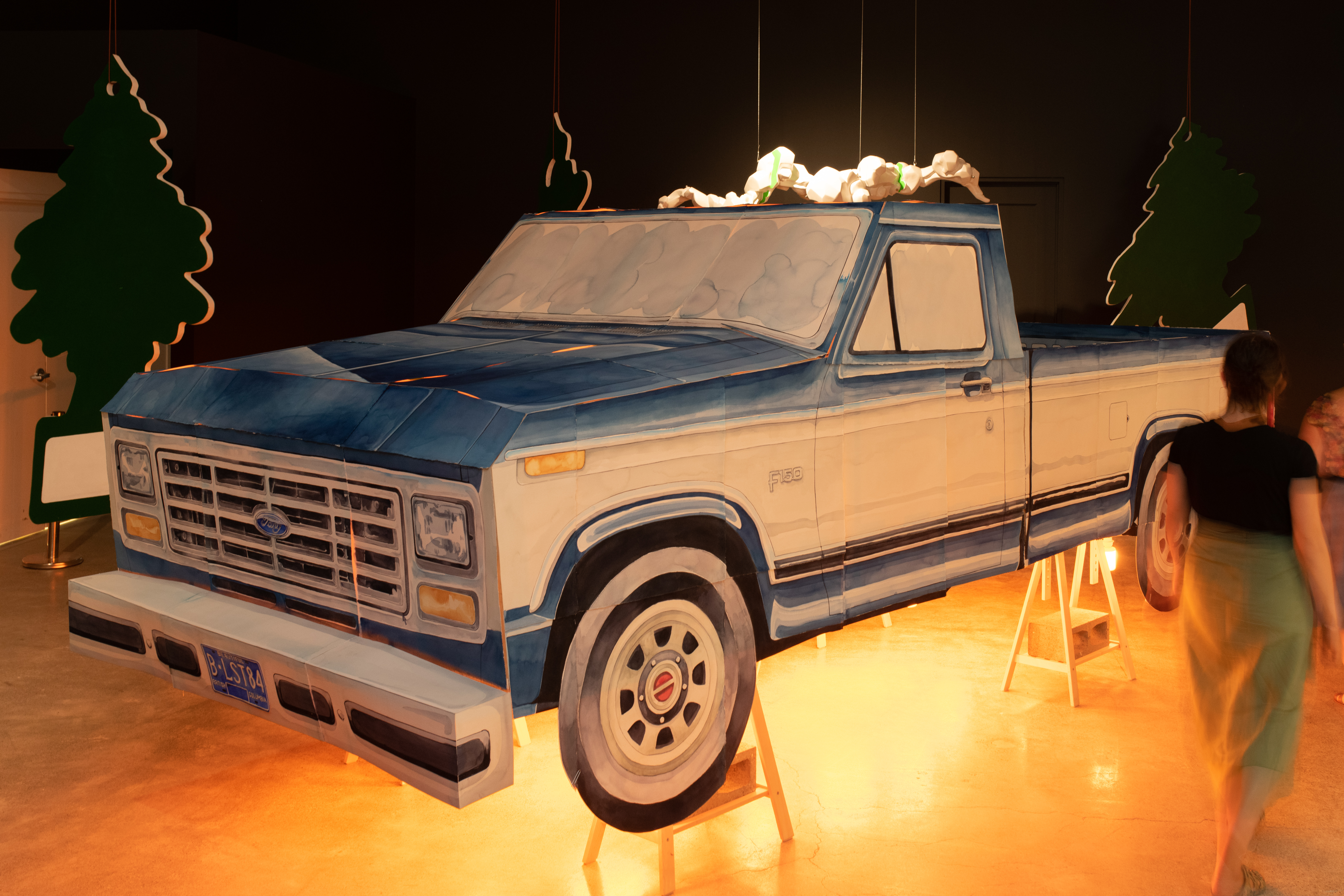 “These paper blessings replicate simple comforts (food and symbols of wealth), both basic – symbolized as ‘hell notes’ or replicas of dollar bills – and luxurious, like Gucci bags and high-end designer swag. These paper replicas are created in often intricate detail as offerings from this life to the next.
“These paper blessings replicate simple comforts (food and symbols of wealth), both basic – symbolized as ‘hell notes’ or replicas of dollar bills – and luxurious, like Gucci bags and high-end designer swag. These paper replicas are created in often intricate detail as offerings from this life to the next.
“For this body of work, I created a life-sized paper truck, with the idea that I'm creating this object as a way of communicating with my ancestors that I don't know about or have zero connection with. That's why the show is called Reluctant Offerings, because there is a form of embarrassment about not knowing the protocols of your own culture. But being culturally aware enough to understand this is important in the hybrid culture that I exist in right now.
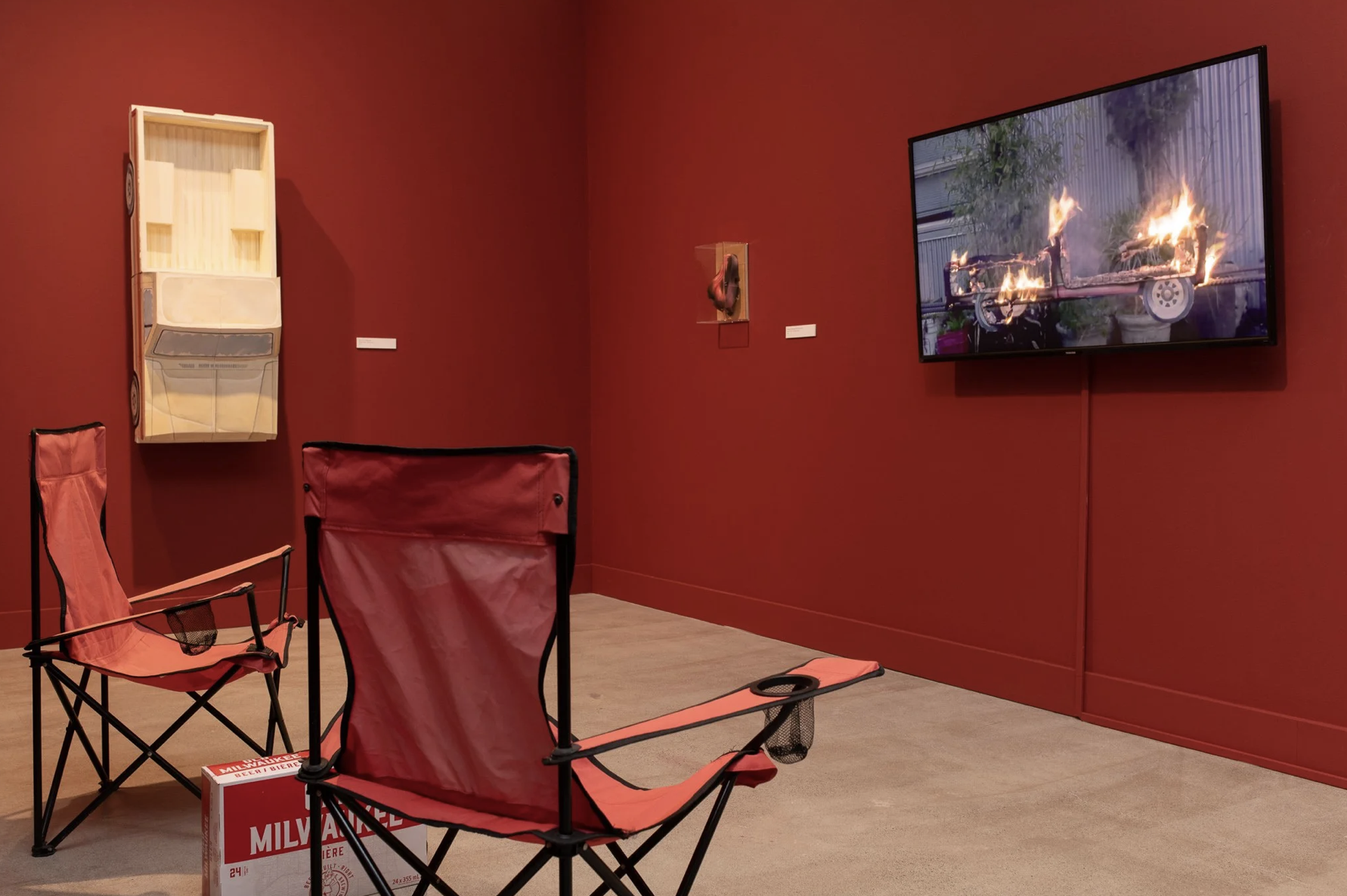 “I use my artwork as a way to explore the in-between, the cultural confusion, or hybridity that exists in my psyche. It is a way to unpack, a way to connect with what can feel like cultural detachment or the cultural flatness that can come with being an immigrant.”
“I use my artwork as a way to explore the in-between, the cultural confusion, or hybridity that exists in my psyche. It is a way to unpack, a way to connect with what can feel like cultural detachment or the cultural flatness that can come with being an immigrant.”
This is postmodern bricolage, not as playful pastiche, but as a means of cultural survival, where fragments of ritual, pop aesthetics, and personal longing are stitched together to form new sites of belonging.
In this moment of disinformation, polarization, and rapid global change, Brendan’s work takes on an even sharper resonance. The role of the artist as cultural commentator is constantly shifting with the pendulum swings of political and social life. Brendan’s practice stands at this crossroads, negotiating aesthetic concerns and the responsibility of speaking into a fractured climate, one where truth feels unstable and where the artist’s voice can both anchor and provoke. His work reminds us that commentary need not be heavy-handed; it can be playful and disarming while still cutting to the heart of cultural anxieties.
Brendan: “This is maybe the elephant in the room, but I am so glad that I'm in Canada. We are still able to fight for diversity, inclusivity, and equity. It is still on our main political agenda and in our politicians' minds. We're not interested in letting this topic go, and we also know that our strength is in hearing all voices and celebrating each other.”
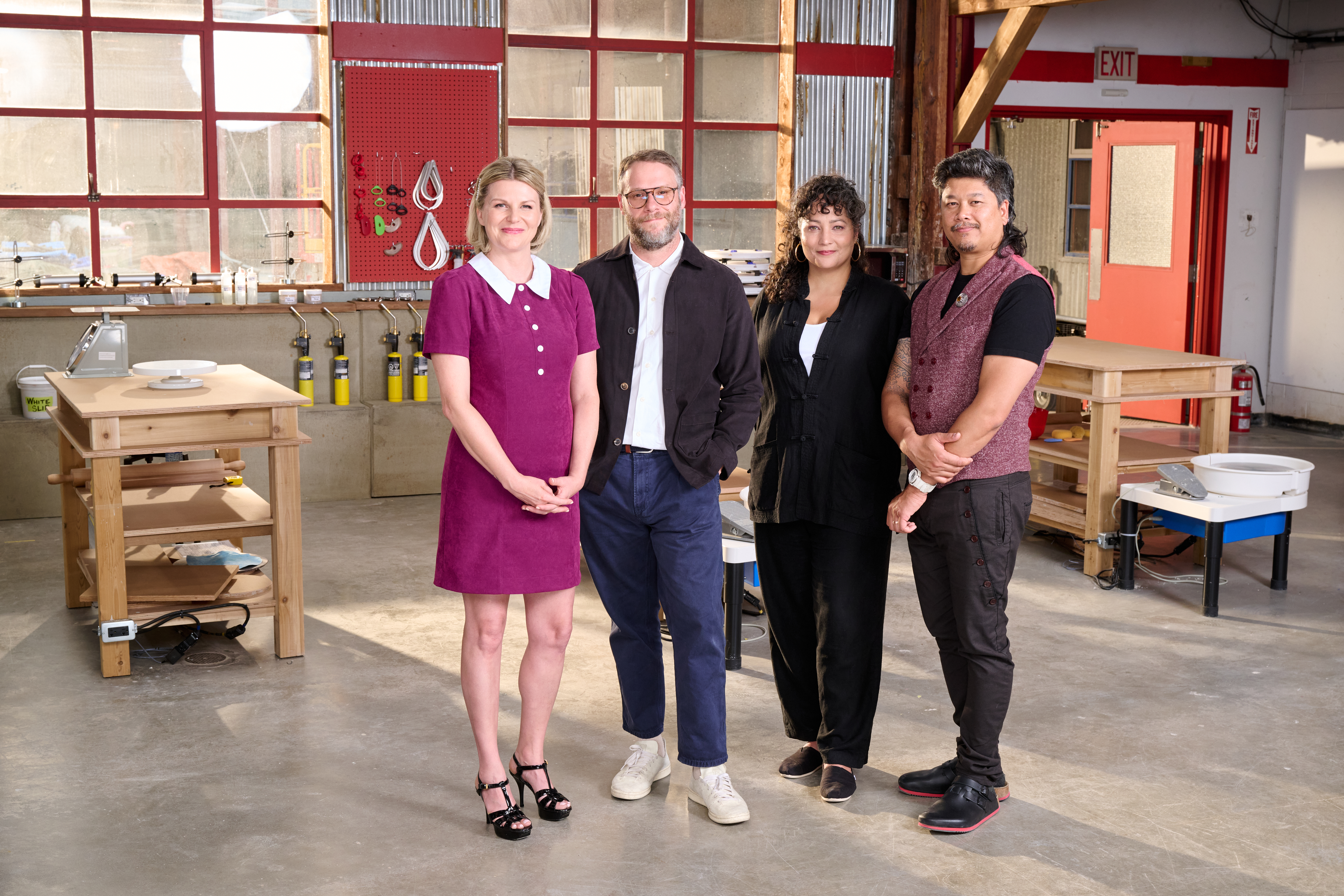
As our conversation drew to a close, Brendan returned to the theme of cosmic horror, sparked by my question about the new directions shaping his work.
Brendan: ”You know, it's funny that you asked this, because right now I have been a little shy to talk about this new body of work, because it is divergent from what I normally do. I’ve started making these ceramic objects that look much like rocks. And I'm contemplating deep time, and I'm thinking about mathematics.
“The inspiration is similar to those cosmic horror ideas we were discussing, i.e., a time before humans and a time after humans.
“I’m still in the realm of questioning my feelings on identity and where I fit within this polarizing climate. I worry that sometimes, maybe, 'am I part of this?' Am I part of why there is this rise of fascism, because people are feeling excluded? A ceramics example of this might be the sense that some people feel like they can't talk about Chinese ceramics because they are not Chinese or they're feeling ostracized from a social group, so they are going into these other toxic spaces.
“This work stems from a feeling of being a little disappointed in humanity. So, I have found myself looking into the planet, the cosmos, and time as inspiration. Because so much of my work is informed by material culture, by the visual culture of our species, I think I'm getting to a point where I need a break from talking about humans and instead explore pre-material culture and post-material culture.”
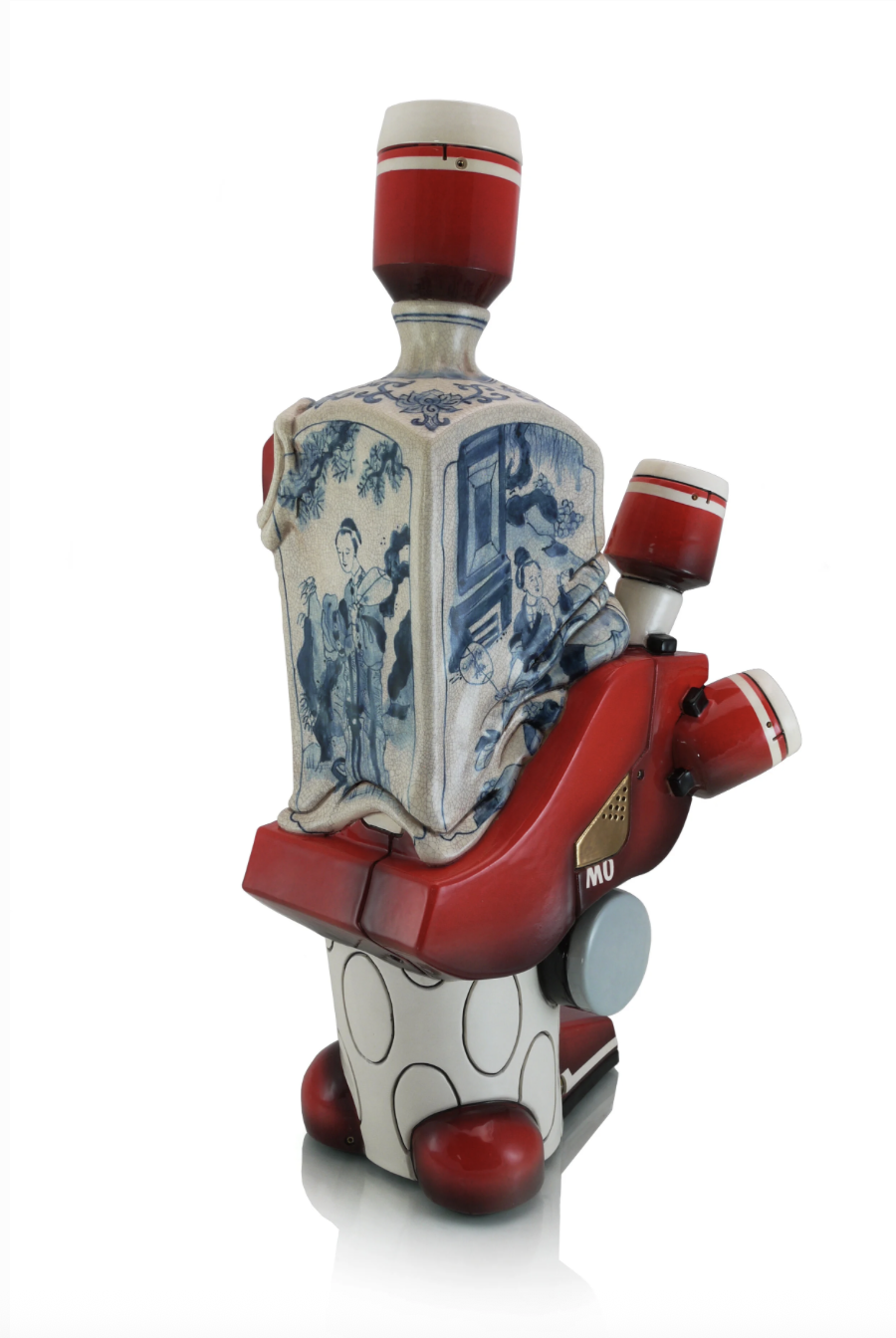 Brendan’s new body of work marks a shift away from his familiar mash-ups of pop culture and art history toward forms that contemplate deep time and a world beyond human presence. Even in this divergence, his practice remains tethered to larger questions of belonging, exclusion, and hybridity. Leveraging its ability to mimic other materials, clay allows him to stage objects that oscillate between cosmic history and pop fantasy, allure and disquiet. The result is an artistic practice that collapses cultural hierarchies while embodying the hybrid spirit of his generation.
Brendan’s new body of work marks a shift away from his familiar mash-ups of pop culture and art history toward forms that contemplate deep time and a world beyond human presence. Even in this divergence, his practice remains tethered to larger questions of belonging, exclusion, and hybridity. Leveraging its ability to mimic other materials, clay allows him to stage objects that oscillate between cosmic history and pop fantasy, allure and disquiet. The result is an artistic practice that collapses cultural hierarchies while embodying the hybrid spirit of his generation.
NOTES
[1] Combo-chains are a gaming term for blending moves into one another seamlessly. This technique is commonly seen in fighting games, RPGs, etc. In Street Fighter, a player using Ryu might chain together a jumping heavy kick, with a crouching medium kick, followed by Hadouken (fireball). Each move flows directly into the next, creating a seamless combo.

